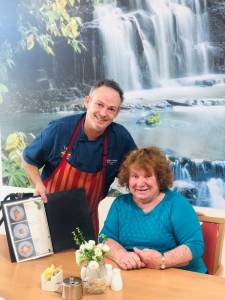
Studies show that one in two older aged Australians are malnourished, which can play a detrimental part in their day-to-day lives. To avoid this, seniors are encouraged to eat when they’re hungry and to drink at least 1.5L of water each day.
As simple as this may sound, not every aged care resident can make this decision. In many cases, it is made for them by the timelines of the facility they live in.
“Quality food and dining options at our facility is one of our highest priorities, particularly relating to the resident’s choice – be that choice to eat when and where they like, but also what they like, all while ensuring residents can take in the full nutritional value of what is required for their age and circumstance,” said Vietnam Veterans Keith Payne VC Hostel CEO, Justin Dover.
“We have offered our residents this opportunity since 2012. We have two separate dining rooms, multiple meal options and various sitting times meaning our residents can choose to eat at a time that works for them.

“This is the same luxury we allow ourselves every day – it was a very easy decision for us to make when we implemented it all those years ago.”
With the rise of COVID-19 and increased social distancing measures, the facility’s flexible dining has evolved even further, whereby now residents are not bound by time at all.
To ensure less people are populating the dining rooms, residents are currently able to leave their room and receive a meal at any time they please.
This has been very warmly received and with its success, this adaption will become the new normal once COVID-19 restrictions are reduced, ensuring residents have full autonomy in deciding when they eat throughout the day.
“The immediate benefits have been obvious in that we have smaller crowds flowing in and out of the dining rooms on a regular basis,” said Mr Dover.
“We also foresee there being various long-term benefits as well, not least of which is giving our residents a greater feeling of independence.
“We are always looking for new ways to push the boundaries of what is expected from an aged care facility. This initiative has proven to be a great success, now we move on to what’s next.”
Images supplied.
This is what I would expect from a residential facility. I would not be happy having to eat at set times and having minimal or no choice on what I eat.